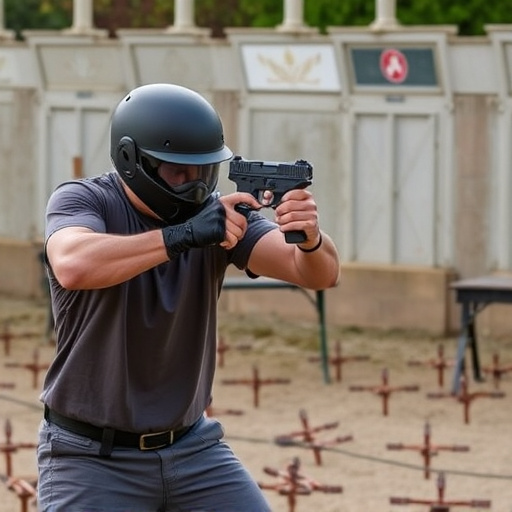Stun guns, non-lethal weapons causing muscle spasms through electric shock, vary in price based on voltage, current, range, battery life, build quality, and safety features. Models differ in power output and pulse sequence, affecting impact range. Basic stun guns start at $50 while advanced units can cost several hundred dollars. Global legal frameworks regulate their sale and use; understanding local laws is crucial. Safety considerations include storage, training, and choosing models suited to individual needs and budgets. The market offers diverse options catering to varying demands and budgets, from basic to innovative high-end models.
“Debilitating electrical charge weapons, commonly known as stun guns, have emerged as powerful personal defense tools. This article explores the multifaceted world of stun devices, providing an in-depth analysis from technical specifications to legal frameworks. We’ll uncover the various types, their effects on targets, and the factors influencing their price range—a key consideration for consumers seeking high-performance stun guns. Additionally, we’ll delve into safety precautions and market trends, offering a comprehensive guide for anyone interested in understanding this innovative self-defense technology.”
- Understanding Debilitating Electrical Charge Weapons
- Types of Stun Guns and Their Effects
- Factors Affecting Price Range for Quality Stun Guns
- Legal Considerations: Regulations and Permits
- Safety Precautions When Using Stun Devices
- Market Trends in High-Performance Stun Guns
Understanding Debilitating Electrical Charge Weapons
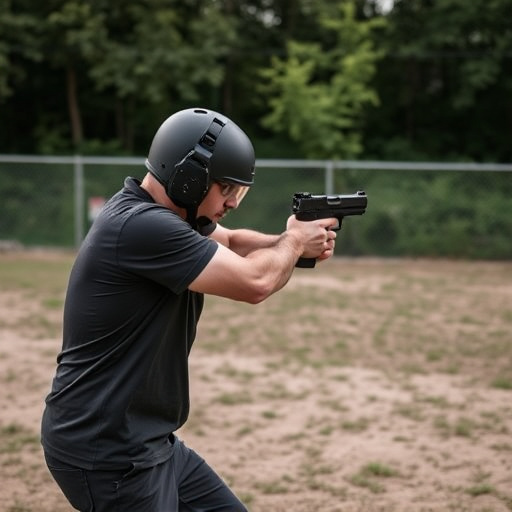
Debilitating electrical charge weapons, commonly known as stun guns or tasers, are non-lethal devices designed to temporarily incapacitate a target through electric shock. These tools have gained popularity among law enforcement agencies and civilians alike for their ability to subdue an assailant without causing permanent harm. Understanding these weapons involves grasping their operating principles, effectiveness, and the varying price range for quality stun guns based on features like voltage, current, and shot range.
The basic mechanism behind a stun gun is simple: it delivers a high-voltage, low-current electrical pulse to the target through two probes or electrodes. This pulse disrupts the nerve signals in the body, causing muscle spasms and temporary paralysis. The price of stun guns can vary widely, typically reflecting factors such as power output (measured in joules), shot range, battery life, build quality, and additional safety features. While lower-end models might offer basic functionality within a more affordable price range for quality stun guns, higher-end options provide enhanced performance, reliability, and advanced safety mechanisms to ensure proper usage and minimize accidental discharges.
Types of Stun Guns and Their Effects

Stun guns, also known as electric shock weapons, come in various types, each with distinct features and effects. The two primary categories are those that use a single high-voltage pulse (HVP) and those employing a series of lower-voltage pulses for prolonged stun durations. HVP stun guns deliver an intense jolt, causing muscle spasms, disorientation, and temporary incapacitation. They typically have a shorter range but pack a powerful punch, making them popular choices for personal defense against aggressive assailants. On the other hand, pulse stun guns offer extended reach and are effective at keeping attackers at bay without causing permanent harm. These devices are especially useful in close-quarters situations.
The price range for quality stun guns varies widely based on features like voltage output, pulse frequency, weight, and build quality. Basic models suitable for everyday carry might start from around $50, while more advanced units with extended battery life, tactical designs, and additional accessories can cost several hundred dollars. When selecting a stun gun, it’s crucial to balance its effectiveness, the range of impact, and your budget. Always consider factors like ease of use, reliability, and any legal restrictions in your region to ensure the chosen weapon meets your needs while adhering to local regulations.
Factors Affecting Price Range for Quality Stun Guns
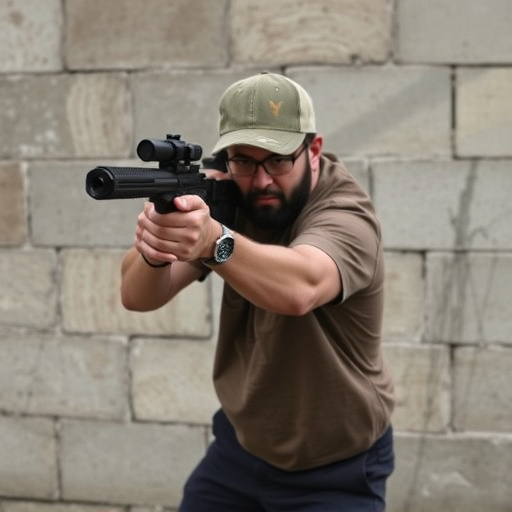
Several factors determine the price range for quality stun guns, making them a varied and accessible option in personal defense devices. One of the primary influences is the power output, with higher joule ratings typically commanding a premium due to their increased effectiveness as non-lethal weapons. The technology used also plays a significant role; advanced features like adjustable voltage settings, LED lighting for low-light situations, or smart safety mechanisms can elevate the cost.
Furthermore, construction quality and materials contribute to pricing. Stun guns made with robust metal frames, impact-resistant bodies, and durable components are generally more expensive than those with basic plastic casing. Brand reputation and market demand also affect pricing; well-established brands known for their reliability and performance tend to command higher prices. Ultimately, the price range for quality stun guns varies based on these interconnected factors, offering consumers a range of options catering to different budgets and needs.
Legal Considerations: Regulations and Permits
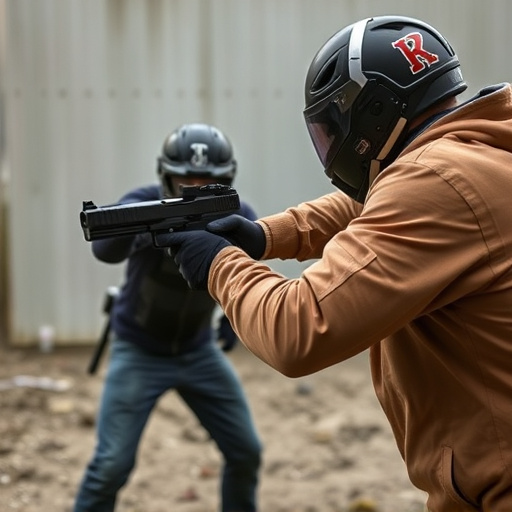
The development, possession, and use of electrical charge weapons, such as stun guns, are subject to stringent legal considerations and regulations worldwide. These laws vary significantly from country to country, with some regions permitting their use for self-defense only under strict conditions. In many jurisdictions, acquiring a stun gun requires obtaining specialized permits or licenses, ensuring the user meets specific criteria, including proving a valid need for such a device.
The legal landscape surrounding stun guns also dictates price ranges for quality models, with higher prices often correlating to enhanced safety features, power outputs, and compliance with local regulations. Understanding these legal aspects is crucial before considering the purchase of any electrical charge weapon, as they not only dictate accessibility but also ensure responsible usage, aligning with public safety standards.
Safety Precautions When Using Stun Devices
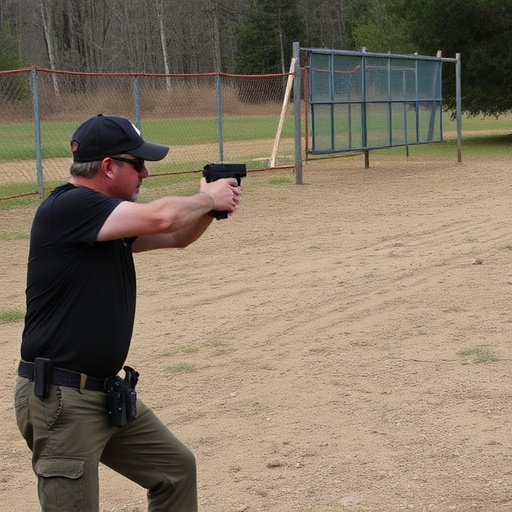
When using stun devices, safety precautions are paramount. It’s crucial to understand that while stun guns and other electrical charge weapons offer personal protection, they should only be employed as a last resort. Always ensure you’re familiar with local laws regarding stun device ownership and usage; penalties for misuse can be severe. Additionally, keep stun devices out of reach of children and store them securely in a safe location to prevent accidental activation or misuse.
Choosing a quality stun gun within the right price range is essential. High-end models often boast improved durability, power output, and safety features like automatic shut-off mechanisms and advanced triggers. However, budget-friendly options still provide effective personal protection for those on tighter budgets. Regardless of cost, proper training in the use of stun devices is mandatory to guarantee safe and effective deployment.
Market Trends in High-Performance Stun Guns
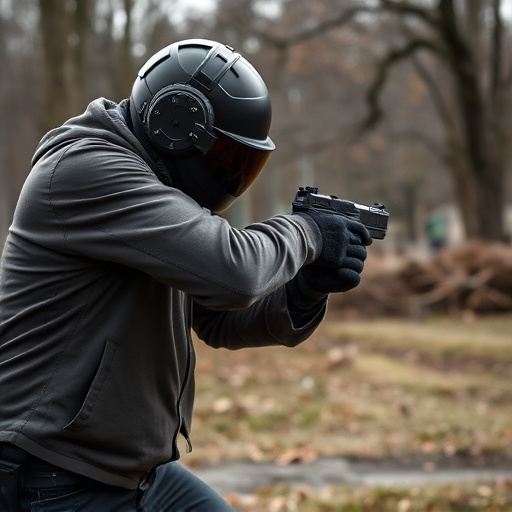
In recent years, there’s been a notable trend in the market for high-performance stun guns. The demand has surged, driven by both personal safety concerns and evolving technology. Consumers are increasingly seeking devices that offer not just a shock but also advanced features like LED lighting, tactical design, and customizable settings. This shift towards more sophisticated and reliable stun guns reflects a growing awareness of self-defense needs in today’s dynamic world.
The price range for quality stun guns has expanded accordingly, catering to diverse budgets without compromising on performance. Mid-range models now often include advanced safety mechanisms and longer battery life, while high-end devices boast innovative technologies like smart sensors and customizable shock intensities. This variety ensures that individuals can find a suitable stun gun within their preferred price range, balancing quality, features, and personal protection requirements.
In conclusion, debilitating electrical charge weapons, also known as stun guns, offer a non-lethal self-defense option with varying effects and legal considerations. Understanding the different types, their specs, and the factors influencing their price range—from $50 to over $1,000—is essential for informed purchasing. Safety precautions must be prioritized when using these devices, and staying updated on local regulations is crucial. As market trends in high-performance stun guns evolve, consumers can expect innovative features while navigating legal frameworks that govern their use.
